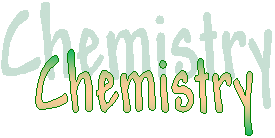|
Chapter
3 Objectives
- to
distinguish between quantitative and qualitative measurements
- to
convert measurements to scientific notation
- to
discintuish among the accuracy, precision, and error of a measurement
- to
identify the number of significant figures in a measurement
and in the result of a calculation
- to
list the SI (International System) units of measurement and
common SI prefixes
- to
distinguish between the mass and weight of an object
- to
convert between the Celsius and Kelvin temperature scales
|
|
Chapter
3 Outline Framework: Use Concept Summary Page 77 as an aid
- The
Importance of Measurement
- Qualitative
measurement
- Quantitative
measurement
- Scientific
Notation
- Uncertainty
in Measurement
- Accuracy
- Precision
- Error
- Significant
figures in measurements
- Significant
figures in calculations
- International
System of Unit
- Units
of length
- Units
of volume
- Units
of mass
- Density
- Determining
density
- Specific
gravity
- Temperature
- Measuring
temperature
- Temperature
scales
back
to top
|
|
Chapter
3 Terms:
- absolute
zero
- accepted
value
- accuracy
- celsius
scale
- density
- error
- experimental
value
- gram
- hydrometer
- Internation
System of units (SI)
- Kelvin
scale
- kilogram
(kg)
- liter
(L)
- meter
(m)
- percent
error
- precision
- qualitative
measurement
- quantitative
measurement
- scientific
notation
- significant
figure
- specific
gravity
- temperature
- volume
- weight
back
to top
|
|
Chapter
3 Questions and Problems
|
|
